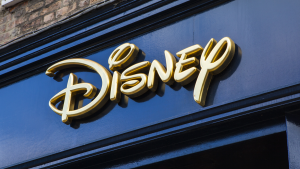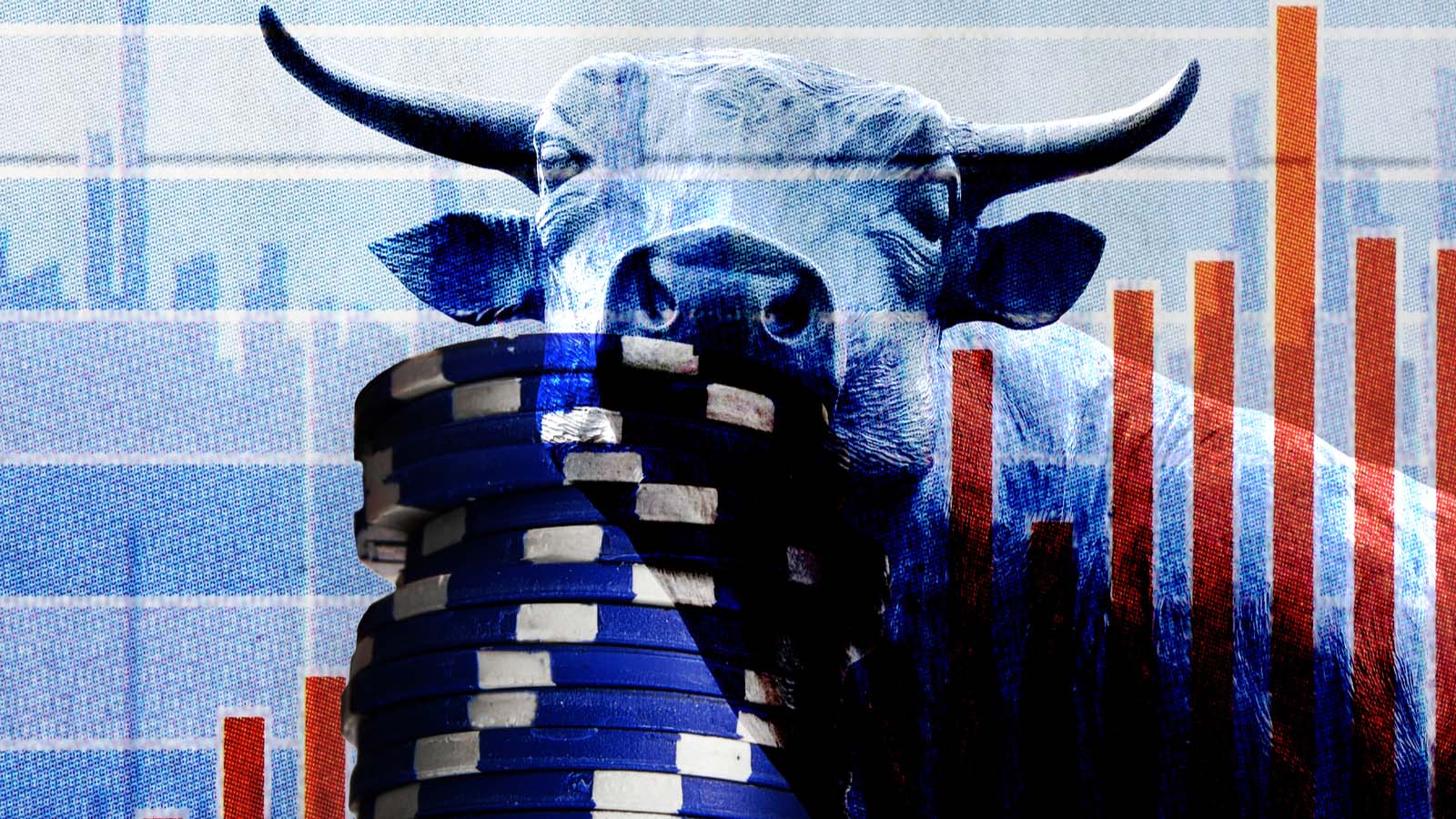Blue-chip stocks have long been “buy and hold” firms with a dominant position in their industry. While they often lack the growth potential of their tech or growth stock peers, they make up for it with stability and reliability. I discuss seven of the top blue-chip stocks to buy below.
Blue-Chip Stocks: Berkshire Hathaway (BRK-A, BRK-B)

It’s hard to find anything to say about Warren Buffett’s legendary conglomerate Berkshire Hathaway (NYSE:BRK-A, NYSE:BRK-B) that hasn’t been repeated ad nauseam. But there’s a new reason to cycle back into Berkshire Hathaway – Buffett is warning that tough economic times are on the horizon. That’s notable because Buffett and team remained silent as hordes of market “experts” played Chicken Little and called for an imminent crash.
In the same presentation, Buffett offered a few options for investors to avoid what he views as impending stock shakiness, including 1) cycling into recession-proof assets, like certain healthcare sectors; 2) looking into commercial real estate options; 3) going abroad with international stocks; and 4) maintaining a healthy cash balance.
For proof, look no further than his holdings disclosure. He meets the first three criteria in spades and operationalizes his cash thesis in recent stock sales exceeding $5 billion, which outpaced new stock buys in the year’s second quarter.
Coca-Cola (KO)

Coca-Cola (NYSE:KO), a blue-chip mainstay, performed surprisingly well last quarter and set itself up to remain one of the best options for buy-and-hold investors. Second quarter results indicated a healthy 20.1% operating margin, only slightly below last year’s 20.7%. While a dip may not seem ideal, KO’s ability to cut costs enough to maintain the same general margin is admirable. Likewise, revenue, income, and EPS grew compared to last year’s period, reinforcing KO’s economy-proof status. The company also has a healthy balance sheet with plenty of cash for contingencies.
Speaking of cash, Coca-Cola continues to reward investors. The company’s current dividend yield is a hair below 3%, but its payout ratio hovers around 75%. That’s a big dip from recent years, which ranged in the mid-80s or higher. If the worst doesn’t happen and KO simply sits on its cash pile, that ratio could jump and benefit blue-chip buyers.
Blue-Chip Stocks: American Express (AXP)

Speaking of Warren Buffett, American Express (NYSE:AXP) is one of the Oracle’s favorite stocks. A stalwart in Buffett’s portfolio, he’s maintained a position for more than 25 years with no indication of selling. This unwavering confidence has earned him over $25 billion in unrealized gains and offers a solid payday for even retail blue-chip investors.
Even against the backdrop of a lukewarm economy, the financial giant shows no signs of relenting. Recent data from the company reveals a 22% surge in revenue to $592 billion, primarily fueled by increasing consumer credit card debt and corresponding higher interest rates.
The stock, reflecting a positive fundamental trend, popped around 8% this year, validating Buffett and like-minded investors’ long-term faith. The company’s leadership eyes a further revenue bump of 15% – 17% by year’s end, along with a promising 14% net EPS rise from the previous year. There’s a modest dividend, too, which makes American Express an ideal blue-chip play in the financial space.
Johnson & Johnson (JNJ)

It’s been a tough year for stock favored among income investors, with multiple lawsuits rocking Johnson & Johnson (NYSE:JNJ). Still, the recent closure of its primary lawsuit means uncertainty is gone. While some earnings will divert to settlement for the foreseeable future, that’s a known known, compared to the known unknown that brought JNJ down almost 9% this year.
Uncertainty and the unknowable impact stocks far more than well-established bad news, and settling is a step towards recovery as institutional investors can start including settlement costs in their financial models to calculate JNJ’s current and future fair value.
At the same time, company management is enthusiastic about growth prospects for the rest of the year. As post-COVID surgeries, like joint replacement, continue climbing, JNJ’s raking in cash as medical devices sell better than they have in years. That rate will doubtlessly keep climbing as healthcare costs hit 20% or more of gross national GDP by the decade’s end.
Blue-Chip Stocks: McDonald’s (MCD)

McDonald’s (NYSE:MCD) is often underestimated by investors as a blue-chip winner. From the lens of a value investor, McDonald’s stands tall as an established brand with unparalleled market dominance. With a sprawling network of 38,000 outlets across over 100 countries, it promises investors a vast geographic spread, operational scale, and consistent cash inflows.
Its formidable balance sheet and iconic brand identity position it as an unassailable force in the market, thwarting potential newcomers. Moreover, McDonald’s proactive adoption of technology and innovation, particularly in the digital and delivery sectors, underscores its agility and responsiveness to evolving consumer preferences, suggesting a sustained growth trajectory.
For dividend chasers, the golden arches don’t disappoint. As a proud member of the Dividend Aristocrats club, McDonald’s boasts a legacy of elevating dividends for an impressive span of almost half a century. This steadfast allegiance to shareholder value makes it an alluring choice for those seeking a steady and expanding revenue stream, ensuring both dividend stability and portfolio growth.
Costco (COST)

Blue-chip retail giant Costco (NASDAQ:COST) stands as a testament to resilient growth, boasting a 23% return on capital and a staggering 150% stock surge over the previous five years. While consumers’ panic-buying of toilet paper may have receded, and they’ve become stingier with grocery expenses, Costco’s influence in the market remains undiminished.
Even after its meteoric rise during the pandemic’s peak, Costco’s growth trajectory continues earnestly. In 2022, despite economic upheavals, membership jumped 7%, perhaps because of the great value Costco represents to budget-focused shoppers. Management’s emphasis on consumer wellbeing further cements old and new member loyalty.
While some activist investors have advocated for raising membership fees, the company’s CFO highlighted the ongoing inflation and household financial strains as reasons to maintain current pricing levels. Reflecting this sentiment in a recent investor meeting, he remarked, “Our view right now is that we’ve got enough leverage out there to drive business. We feel that it’s incumbent upon us to be that beacon of light to our members in terms of holding them for right now.”
Costco’s sustained growth amidst an ambivalent economic landscape and its ingrained brand loyalty earmarks it as an enduring player in the consumer market. It emerges as an ideal blue chip for investors to safeguard their portfolios in uncertain times.
Disney (DIS)

No blue chip is as beat down as Disney (NYSE:DIS), but Mickey’s tide may be turning. Disney seems stuck with shares tumbling almost 10% this year and plummeting 55% from its peak during the pandemic. But this decline doesn’t reflect a foundational shift in Disney’s commanding presence in the entertainment industry; the company appears significantly undervalued at present.
CEO Bob Iger is deeply delving into the core value drivers for Disney and is ready to shed any excess to juice profits. Iger’s recent casual mention of potentially offloading the company’s underperforming TV assets stirred quite the buzz. Although the final decision is still up in the air, it underscores Iger’s intent to recalibrate Disney’s focus. Reinforcing this commitment, Disney’s board recently extended Iger’s tenure, allowing him more time to navigate the company toward prosperity.
Disney’s financial health remains robust, backed by a 1.60 price-to-book ratio, a well-structured capital framework, and a commendable return on equity. This offers a lucrative opportunity for blue-chip investors seeking value. While some hiccups might be on the horizon as Iger repositions the company, Disney’s current valuation is undeniably an enticing buy-and-hold proposition for long-term investors.
On the date of publication, Jeremy Flint held no positions in the securities mentioned. The opinions expressed in this article are those of the writer, subject to the InvestorPlace.com Publishing Guidelines.
